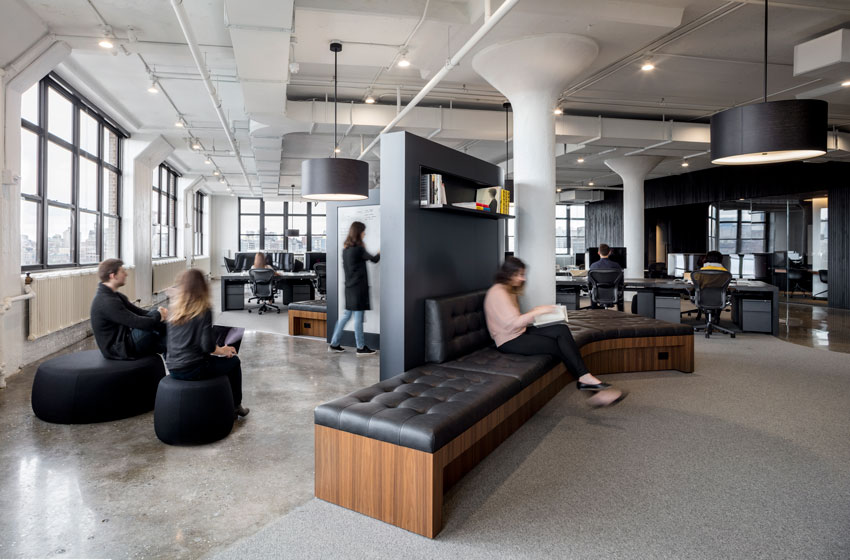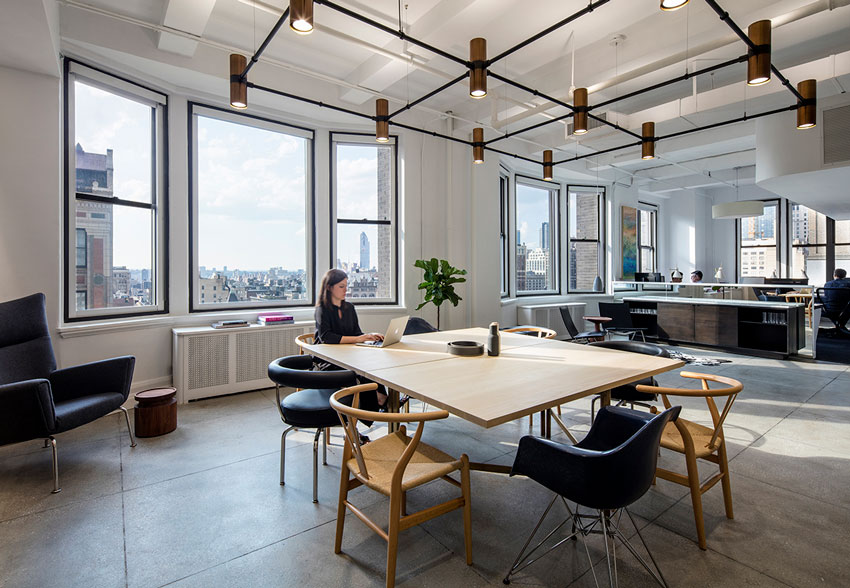Circadian Lighting in the Built Environment
How Circadian Rhythms Can Affect Overall Health
Recognizing that many people’s internal body clocks can be out of sync with nature, we also need to recognize that more than just sleep is impacted. Since the Nobel Prize-winning scientists have found genes in every cell are tied in to circadian rhythms and proteins regulation, it should not be surprising to learn that hormones and overall metabolism of the body are affected too. This means that the health of the entire body can be impacted, positively or negatively, depending on the regularity and consistency of circadian rhythms. When the patterns are disrupted, studies have suggested a linkage to some serious illnesses.
The health of the entire body can be impacted, positively or negatively, depending on the regularity and consistency of circadian rhythms.
Diabetes Connections
Diabetes is a prevalent disease, and an internal medicine study examined whether short or poor sleep is associated with glycemic control in African Americans with type 2 diabetes.8 They conducted a cross-sectional study of volunteers with type 2 diabetes interviewed at the University of Chicago Hospitals, Chicago. The final analysis included 161 participants. Glycemic control was assessed by hemoglobin A1c (HbA1c) levels obtained from medical charts. Sleep quality was assessed using the Pittsburgh Sleep Quality Index (PSQI). In this sample, sleep duration and quality were significant predictors of HbA1c, a key marker of glycemic control. Combined with existing evidence linking sleep loss to increased diabetes risk, these data suggest that optimizing sleep duration and quality should be tested as an intervention to improve glucose control in patients with type 2 diabetes.
Cardiovascular Connections
The relationship between cardiovascular disease and circadian rhythms was reported on in 2011 in the Journal of Cardiology.9 The study indicated that both the physiological and pathological functions of cardiovascular organs are closely related to circadian rhythm since heart rate, blood pressure, and endothelial function show diurnal variations within a day. Recent progress in studying the functions and molecular mechanisms of the biological clock brought forth the idea that intrinsic circadian rhythms are tightly related to cardiovascular pathology. In addition to this central clock, each organ has its own biological clock system, termed the peripheral clock. Each cardiovascular tissue or cell, including heart and aortic tissue, cardiomyocyte, vascular smooth muscle cell, and vascular endothelial cell, also has intrinsic biological rhythm. Until recently, little was known about the roles of peripheral clocks in cardiovascular organs. However, studies using genetically engineered mice revealed their contributions during the process of disease progression. Loss of synchronization between the internal clock and external stimuli can induce cardiovascular organ damage. Discrepancy in the phases between the central and peripheral clocks also seems to contribute to progression of the disorders. Elucidation of the precise roles of biological clocks in cardiovascular organs will provide more profound insights into the relevance of the circadian rhythm in cardiac pathology. This time-of-day-based strategy may innovate a new paradigm in the prevention and treatment of cardiovascular disorders.

Photo courtesy of Ketra/Magda Biernat
Project: Creative Technology Company Headquarters
Location: New York City
Architect: A+I
Lighting Design: Lighting Workshop
Most office lighting is too dim in the daytime and too bright at night. In this office, the light is just right at any time of day. The fully customizable lighting and controls system allows for flexible and productive working spaces throughout the entire office.
Cancer Connections
The impact of breast cancer on women across the world has been extensive and severe, and the relevance of human melatonin regulation has also been studied.14 As the prevalence of breast cancer is greatest in industrialized regions, exposure to light at night has been proposed as a potential risk factor. This theory is supported by the epidemiological observations of decreased breast cancer in blind women and increased breast cancer in women who do shift-work. (Separate studies have suggested rotating and night shifts can impact circadian rhythms, melatonin production, and increase health risks.13) In addition, human, animal, and in vitro studies that have investigated the melatonin-cancer dynamic indicate an apparent relationship between light, melatonin, and cancer, albeit complex. Under highly controlled exposure circumstances, the research shows that less than 1 lux of monochromatic light elicited a significant suppression of nocturnal melatonin.
In view of the possible link between light exposure, melatonin suppression, and cancer risk, it is important to continue to identify the basic related ocular physiology. The study authors conclude that visual performance rather than circadian function has been the primary focus of architectural lighting systems. It is now necessary to reevaluate lighting strategies, with consideration of circadian influences, in an effort to maximize physiological homeostasis and health.
Wellness With Natural Light Indoors
With an understanding of the significance of human circadian rhythms, it now becomes quite obvious that when a building does not provide connections to natural light, it takes away the visual cues that keep our body clocks in line and affects well-being. Large buildings without views to the exterior and natural daylight need to rely on electric lighting that is typically uniform throughout the day and often contains a lot of blue light in its output. That means people who need to spend extended hours in these buildings are at risk for all of the negative symptoms of interrupted circadian rhythms discussed above. In essence, the design of the building is trading off the well-being of the occupants for some presumed efficiency in the building design.
Daylighting is usually integrated into a building as an architectural statement and for energy savings, but the LEED rating system and others recognize that there are benefits from daylighting that extend far beyond that. When psychological and physiological aspects of natural light are considered, daylighting has been associated with higher productivity, lower absenteeism, fewer errors or defects in products, positive attitudes, reduced fatigue, and reduced eyestrain.4 Since the 1920s, studies have been conducted on worker productivity and daylight which indicate that office worker productivity can increase with the quality of light. Natural light increases attention and alertness during the post-lunch dip and is helpful in alertness for boring or monotonous work.
Because of research like this, the LEED building rating system has, from its beginning, always placed a value on natural daylight and views to the exterior as part of its indoor environmental quality section. It has based the credit and point requirements in this category on research into this area and the efforts of other notable and reliable organizations that have done work in this field. In recent years, it has acknowledged the work of the WELL Building Standard developed by the WELL Building Institute (WBI).

Photo courtesy of Ketra
Workplaces that are designed for natural light from outside and internal sources can improve health and well-being and help achieve LEED and WELL certification.
The WELL Building Standard
According to its stated purpose, The International WELL Building Institute (IWBI) is “a public benefit corporation that is leading the movement to promote health and wellness in buildings and communities everywhere.” Its primary rating tool, the WELL Building Standard, was launched in October 2014 after six years of research and development. It has gained recognition quickly as “the premier standard for buildings, interior spaces, and communities seeking to implement, validate, and measure features that support and advance human health and wellness,” (www.wellcertified.com).
The WELL Building Standard addresses eight areas within the built environment that influence human health: air, water, nourishment, fitness, comfort, mind, innovation, and the one we will focus on, light. With 100 main features listed in the WELL standard, 11 are focused on light, including such things as the quantity and quality of daylight, electrical light in a building, and the surfaces that the light strikes. One main feature in particular (#54) is focused on circadian lighting design, and one pilot feature (P3) is based on circadian emulation.
According to WELL: “All light—not just sunlight—can contribute to circadian photoentrainment. [Defined separately as “The entrainment (alignment) of an organism’s circadian rhythm to the pattern of light and dark in its environment.”] Given that people spend much of their waking day indoors, insufficient illumination or improper lighting design can lead to a drift of the circadian phase, especially if paired with inappropriate light exposure at night.” It goes on to point out, “Humans are continuously sensitive to light, and under normal circumstances, light exposure in the late night/early morning will shift our rhythms forward (phase advance), whereas exposure in the late afternoon/early night will shift our rhythms back (phase delay). To maintain optimal, properly synchronized circadian rhythms, the body requires periods of both brightness and darkness,” (www.standard.wellcertified.com/light).
The intent behind the lighting provisions of WELL is to “support circadian health by setting a minimum threshold for daytime light intensity.” This minimum light threshold helps the body remain fully awake during the morning and afternoon while diminishing light levels later in the day encourage rest and less activity. The process of design and certification under the WELL standard is based on equivalent melanopic lux (EML), which accounts for the effect of different levels of light and melatonin production.
Wellness in Practice
Many employers are seeing the value of using the WELL standard and other initiatives to invest in their employees, who are typically their most valuable and expensive asset. For example, if we look at a typical 50,000-square-foot office building and apply the rule of thumb of the 3-30-300 rule (which corresponds approximately to energy-rent-payroll in $/square foot/year) the employer is looking at a total expenditure of just over $16.5 million/year. In this case, 1 percent ($150,000) is devoted to energy, 9 percent ($1.5 million) devoted to rent and operations, while a whopping 90 percent ($15 million) is devoted to employee cost. Therefore, if we took steps to reduce energy consumption by 50 percent ($75,000), it would only have a small impact on the annual operating cost. Improving space utilization by 10 percent could have a larger impact by reducing rent and operating costs ($150,000). But improving worker productivity by just 5 percent could result in very dramatic savings ($750,000). And employing all three of these strategies together can achieve an annual economic benefit of close to $1 million/year. This is a far cry from the slice of the $3/square foot for energy cost that designers often use to justify investments in building upgrades, with the benefits to employees considered at best to be a bonus or side benefit rather than the main driver.
In a more specific example, a case study of Lockheed Martin and VeriFone facilities looked at improved light conditions for workers by integrating more daylighting in its new office building.4 At Lockheed Martin, the increase in daylight boosted productivity by 15 percent. At VeriFone, there was a reported increase in productivity after a year and a half of new conditions by 5 percent and a total product output increase of 25–28 percent, making the new building more cost effective. This case study indicates that the improved health of building occupants not only benefits employees but also employers and building owners because of improved performance.









